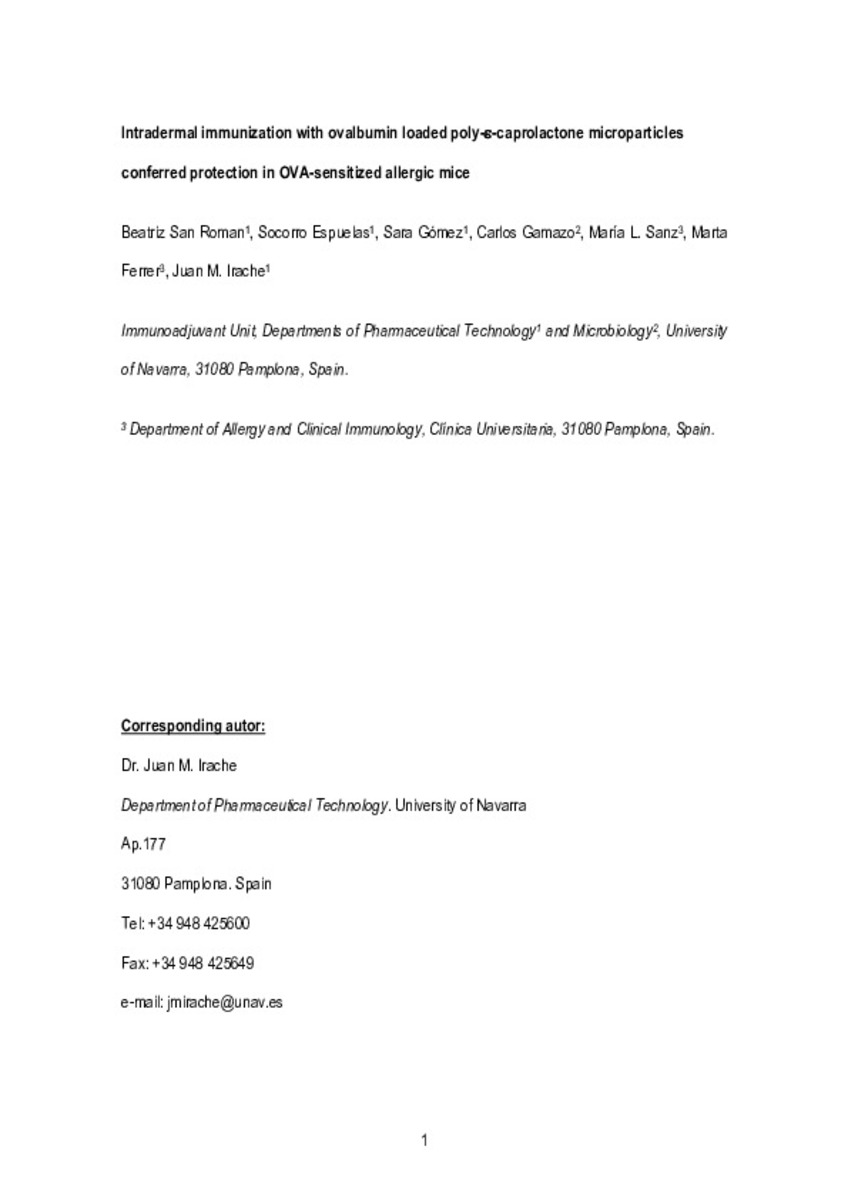Intradermal immunization with ovalbumin-loaded poly-epsilon-caprolactone microparticles conferred protection in ovalbumin-sensitized allergic mice.
Keywords:
Microparticles
Ovalbumin
Immune response
Adjuvant
Allergy
Publisher:
Wiley-Blackwell
Editorial note:
The definitive version is available at www3.interscience.wiley.com
Citation:
Román BS, Espuelas S, Gómez S, Gamazo C, Sanz ML, Ferrer M, et al. Intradermal immunization with ovalbumin-loaded poly-epsilon-caprolactone microparticles conferred protection in ovalbumin-sensitized allergic mice. Clin Exp Allergy 2007 Feb;37(2):287-295.
Statistics and impact
0 citas en

0 citas en

Items in Dadun are protected by copyright, with all rights reserved, unless otherwise indicated.










